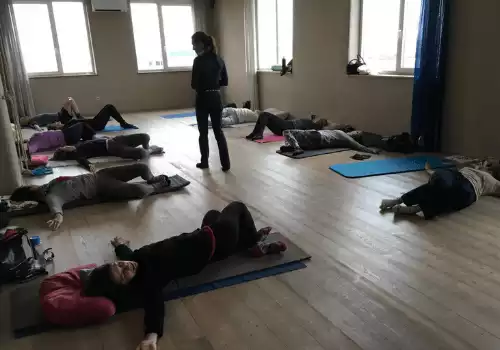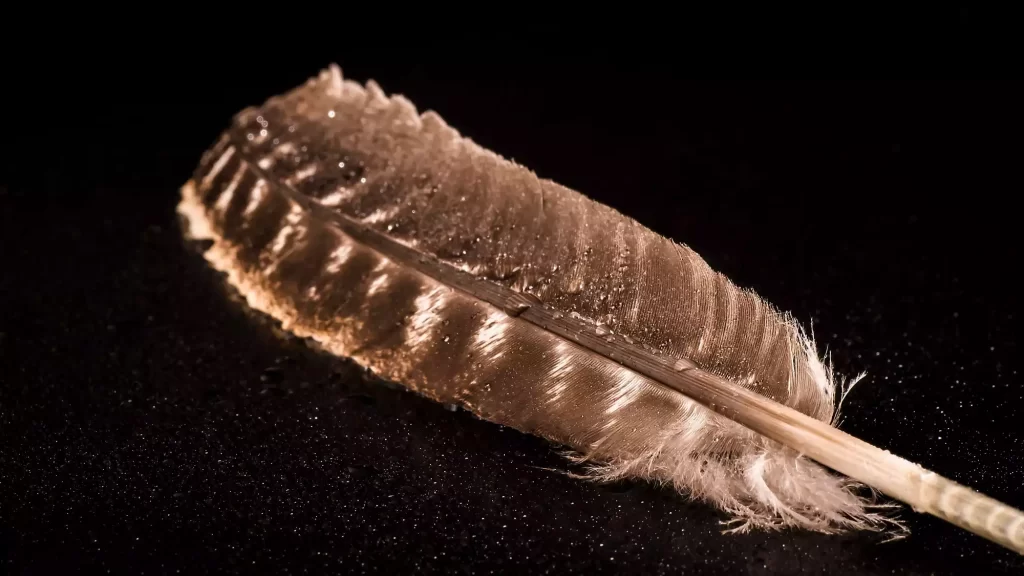Plantar fasciitis is recognized as a stabbing pain on the bottom of a foot, near the heel, and can spread to the foot arch and the toes. It is caused by an injury of the plantar fascia, a connective band of tissue that runs from the heel bone to the toes and supports the foot arch. The causes of inflammation are frequent walking, running and standing on a hard surface, sports (volleyball, handball, football, athletics), shortened tibia, inflexible Achilles tendon, flat foot. Problems develop gradually, usually on one foot only. The pain is often the worst with the first few steps after awakening, although it can also be triggered by long periods of standing or rising from sitting. The pain is usually worse after exercise, not during it. Damage to the plantar fascia leads to inflammation of adjacent tissues and eventually to the formation of the heel spur and heel calcification. If not thoroughly repaired, these can develop into chronic problems. Due to the changed mechanics of walking, pain in the foot is compounded by issues with knees, hips and spine.
“In the picture, red arrows indicate the pull caused by the green light reflex, which causes inflammation and pain in the foot and heel”. It’s important to understand that green light reflex enables us to stay on our feel under the weight of plans, actions and responsibilities we have to take on our shoulders.


AEQ method considers overly and continuously activated green light reflex as the reason for plantar fasciitis. The muscles on the back of the body (extensors) are tense and tight due to sensory-motor amnesia. This causes stiffness in calf muscles, Achilles tendon and connective tissue of the foot. As the foot moves forward (walking), the front of the foot and groin become tense more than necessary. Over the years, the stiffness of the leg movement increases, the step length gets ever shorter, thus changing the biomechanics and efficiency of the movement. These are all compounded by improper footwear, high heels or a change in the body’s center of gravity during pregnancy. The position of the pelvis is also pushed forward by a contraction in glutes and lower back muscles. And the weight that is too heavy to be held by contractions in the foot produces pain signals from plantar tissues in the foot. When the ego holds the foot in the supine position (moving position) even when under pressure that is too heavy for the body to move and the foot should be therefore in pronation (holding position) the circumnutating for plantar fasciitis is created.
AEQ method® eliminates plantar fasciitis by reducing sensory-motor amnesia and with better control of the green light reflex and with a better understanding of how stress and pressure influence body structures and functions. Coordination of muscle contraction and muscle relaxation is more effective with less effort (work). Lower muscle tonus and better relaxation during sleep are also crucial as this restores the elasticity of legs and feet. Therapy affects the length and softness of the step, restores correct biomechanics of movement and eliminates asymmetric rotation and off positions of the pelvis. The latter is always present in foot pain.
(Disclaimer: Not necessary after applying the AEQ method® into a training or rehabilitation process.)

Using the AEQ method®, the 800- and 1500-meter runner Matjaž Pregrat from AK Krka Novo Mesto healed his plantar fascia. He had plantar fasciitis on both feet. He said: “The pain only got worse after a few months of physical therapy. I simply gave up. When I learned about the AEQ method®, I immediately started the therapy; after two therapies and a month later, I started with easy running, and I was already in serious training in the next month. The feeling was amazing as I was finally able to control my body and run with a certain feeling and measure.”

Experience of AEQ method used to eliminate Plantar Fasciitis
Matjaž Pregrat AK KRKA Novo mesto
All I can say is that it almost doesn’t get any better than this. I really can’t go without the AEQ method ® anymore. My character has also changed significantly; my view of the action in and around me is different. If a draw the line, this is it after only two short months of somatic exercises, four active therapies and three months of intensive training…
Situation on 18.09.2015
I still have some reserve left in terms of results; I have my last famous track race of this year tomorrow. I notice and feel that I have lots of options to improve my running technique. But I still can’t believe I’ve solved my problem with a plantar fasciitis smile emoticon.
It’s going to be exciting and rewarding winter. Kind regards,
Neža Sintič, Šentjernej
Hi, Aleš.
Well, I don’t even know where to begin. First, let me thank you – for useful advice, believing in a positive outcome when I didn’t believe in it. My condition improved a lot. I couldn’t imagine a few months ago, back then when even few running steps caused such pain, that I would soon be able to run again, not long runs though, but 20-minute runs, nevertheless. I’ve never imagined that something as simple as 20-/30-minute run could make me so happy. I know I’m not there yet; I still have some work to do until the finish line, but I’m somehow at peace and happy because I see that everything moves in the right direction.
I ran a record distance today (5 km); I stopped once during the run because of the unpleasant feeling around the Achilles tendon, did some somatic exercises and continued running. The pain was gone. Achilles tendon is still a bit swollen after the run, but I know that will eventually settle as well, I need to practice somatic exercises regularly.
I look forward to a day when I will be able to say that this nightmare, which probably happened for a reason, is finally gone.
Thank you!






